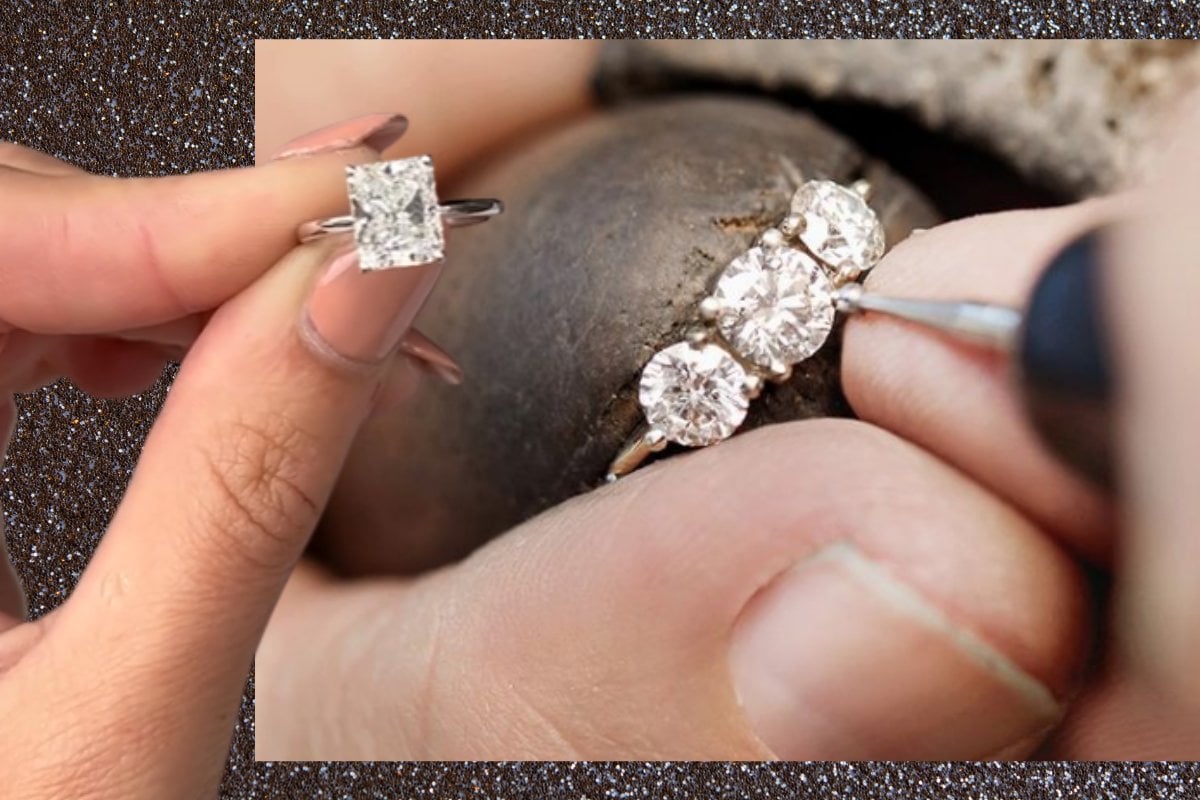
I was having dinner with some girlfriends recently and asked them if they would ever consider lab-grown diamonds for an engagement ring.
They both looked at me and replied without skipping a beat: "No."
It's a traditional way of thinking. I used to feel the same way before I learned more about them.
Just before this recent conversation, I was invited to the Michael Hill HQ for an event about their jewellery recycling program (before I continue, nothing about this article is sponsored), but I couldn't help but fixate on their lab-grown diamonds.
They looked exactly the same as natural ones.
Engagement ring trends through the decades. Post continues below.
In the past five years, the lab-grown diamond market has taken off.
Diamond industry analyst Edahn Golan recently said, "By May of this year, 50 per cent of loose diamonds sold by American jewellery retailers are expected to be lab-created diamonds."
The boss of one of the largest lab-grown diamond manufacturers boldly claimed that sales of lab-grown diamonds could eclipse sales of mined ones by 2030.
